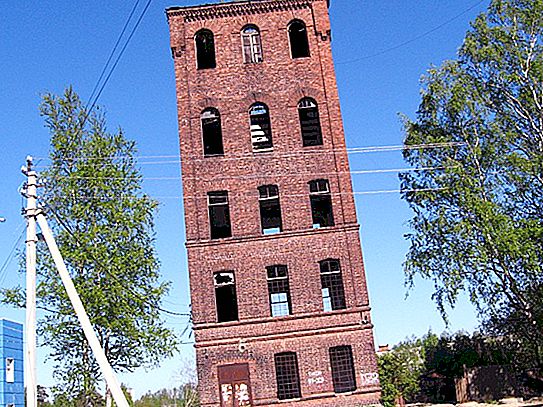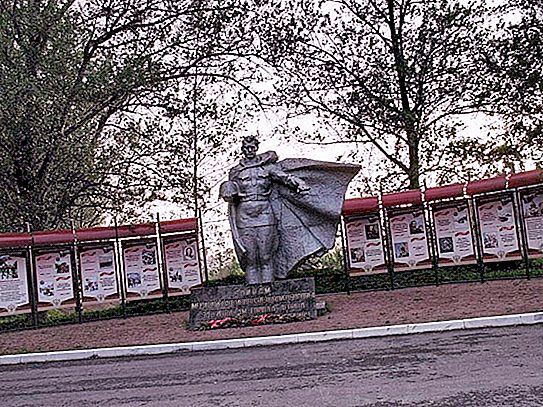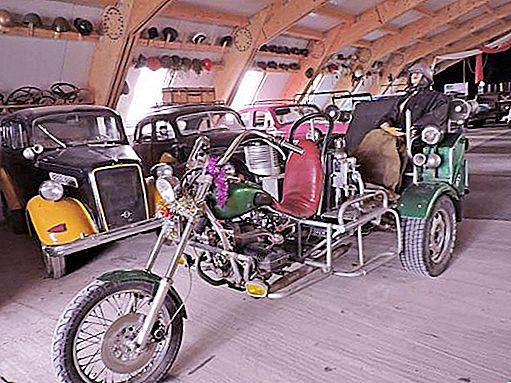The Medvezhiy Stan quarter is located on the banks of the Okhta River and is part of the village of Murino, which is the administrative center of the Murinsky rural settlement of the Vsevolozhsky district of the Leningrad region. In the north, it is limited by the regional highway St. Petersburg - Matoksa, in the northeast by the border of the village of Murino, in the east by the Kapralievy stream and Oboronnaya street, in the southeast, south and southwest by the border of the village, and in the west by the channel Okhta River.
It is generally accepted that the name of the former village of Medvezhy Stan is associated with the placement of jails for keeping black bears in this area in the middle of the 18th century. These bears were caught on the banks of the Okhta and were used for court hunting in the forests around Murino.
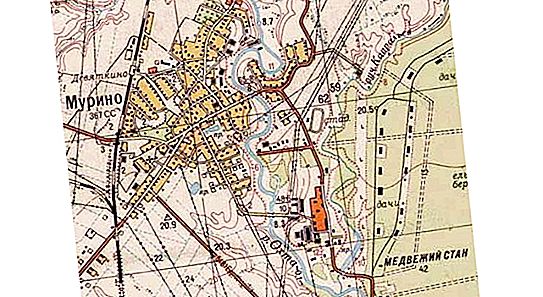
History
Medvezhy Stan near St. Petersburg was supposedly formed in the 18th century, when the construction of powder workshops began on the territory of the present Krasnogvardeisky district on Okhta, by decree of Peter the Great. One plant was launched in 1716, the other in 1747. Nearby the river, by 1768, a dam and a sluice had been built. At that time, there was a dense forest on the territory of the Bear Camp itself, where in 1860 powder cellars were transferred. They were specially designed away from the factories to prevent explosions and fires. In total, there were about 20 cellars surrounded by earthen ramparts. Communication between factories and warehouses was carried out along the river, with the help of boats.

By the end of the XIX century. The Okhta powder factory turned into a huge production complex at that time. It occupied about 469 hectares of land, owned 23.5 km of narrow gauge railway, 16 km of highway and 427 m of cobblestone road. Instead of ordinary boats, tug boats with an electric motor were used to transport gunpowder along the river. Electrical engineer V.N. Chikolev participated in their construction. The Okhta gunpowder plant is the first company in the world that began to use electric watercraft for a long time.
Powder cellars required enhanced security. Since 1888, the 147th Samara Infantry Regiment was located in the barracks built on the territory of the Bear Camp. His companies were used as special forces. In the mid 90's. The 19th century, after several reorganizations, the 200th reserve Izhora Infantry Regiment was permanently located here. Brick barracks, a water tower that has survived to this day, and engineering structures were erected for him. In 1899, a wooden church was also built on the banks of the Kapraliev brook in the name of St. Michael the Archangel. After the revolution, the church was closed, and in 1946 - 1948. it was demolished. Until the early 1960s an artillery warehouse was located on the site of the church, then a skating rink was poured there for some time, and after that a five-story panel residential building was built.
By the end of the XIX century, the population of the village of Medvezhy Stan was almost 2, 000 people. According to historical documents, relations between local residents and military personnel guarding the powder cellars were not easy. According to the volost foreman, the latter voluntarily came from the Bear Camp to Murino and abused alcohol, which led to skirmishes. So, on April 12, 1911, on the third day of Easter, between the peasants and soldiers of the Samara Regiment there was a "Murino massacre", ending in severe wounds of four young Murins, who subsequently died.
The parties to the conflict put forward the opposite version: the peasants claimed that the drunken soldiers began to shoot for no reason, and the military - that they were attacked by hooligans from the nearby village of Murino. However, the investigation established that the peasants did not actually attack the soldiers. They only fled to the sounds of air shots fired by a drunken non-commissioned officer, who was returning to the unit from the village tavern. Then the patrol arrived in time and without thinking twice opened fire on the crowd. Such incidents, given the military’s attempt to confuse the investigation, undermined public confidence in the army.
In the spring of 1918, all the regiments in the Bear Mill were disbanded. For the protection of powder cellars, foresters or workers of the Okhta powder plant were involved. Since 1924, the School of the junior command staff of the Border Troops of the OGPU LVO was located here.
During the Great Patriotic War, fights on the territory of the Bear Mill in the Leningrad Region were not conducted, but not far from it, on the site of the present old cemetery, there was a military airfield from which combat flights were regularly conducted. In the same village, there was a border regiment guarding the rear of the Neva Operational Group, and then the 67th Army. Then there was a civil defense regiment, as a result of which in the 1970s. the village became closed for a while. And in 1996, he was annexed to the village of Murino.
Despite the fact that the Medvezhiy Stan quarter is small, there is something to see for a curious tourist. Residents of the historical district affectionately call it "Bear" and are proud of local attractions.
Former water tower
An old water tower is located next to the local administration building. This original monument of industrial architecture, although now located outside the quarter, is directly related to its history. After all, the tower was built in 1907 for the water supply of the Izhora Regiment, located precisely in the Bear Mill. She provided the settlement with water from the Kaprallya stream until the early 1960s. But then there was an epidemic of hepatitis A, in connection with which the Leningrad water supply network began to be used for water supply.
Now there is a restoration of the tower, which should be completed in 2018. After that, it is planned to place a local history museum with an exposition devoted to the history of Murino, the life of local peasants and, possibly, the former owners of these lands - the Vorontsov family.
Monument to the local air defense warriors
This monument was erected on the territory of the Federal State Institution "SZ RPSO EMERCOM of Russia" at the address: 51 Oboronnaya St. Locals call him "Alyosha". It is a sculptural image of a soldier taking the oath. Behind the monument stands are installed, which provide information about the Days of Military Glory of Russia.
Monument to the Bears
On the even side of Oboronnaya Street, in the square opposite the house of 37 k.1, next to the playground is the monument "Bears for the Bear."
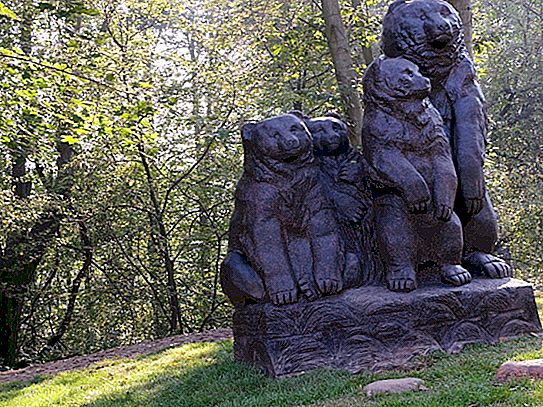
Murino received this statue of four bears as a gift for his 265th anniversary in 2014. An inscription is engraved on a stone stump near it: "Bear camp" in the Murino district, in which a bear nursery was located in the second half of the 18th century."
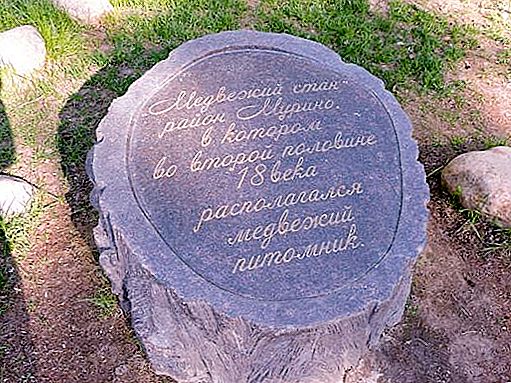
Museum of Antique Cars and Motorcycles
In 2014, a museum of retro cars and motorcycles was opened on the territory of the Bear Mill in the house 36B on Oboronnaya St. Here you can not only admire the rare technique, but also get behind the wheel. Among the exhibits are the Pobeda cabriolet, the legendary Emka and the Douglas motorcycle - the hero of the national TV series Adventures of Sherlock Holmes and Dr. Watson. Techniques of the 30-50s are presented at one site, and military vehicles occupy the other. Visitors note a pleasant atmosphere and an interesting exposition, part of which is located on the street along with mannequins and a field kitchen. The museum is open from Friday to Sunday from 12:00 to 18:00. The museum can be reached by pitch or by minibus number 1 from the metro station "Devyatkino".
Transport infrastructure
The Medvezhiy Stan quarter has a well-developed infrastructure. By land transport from it you can get to the stations of the St. Petersburg metro, as well as to the Vsevolozhskaya railway station. You can get from St. Petersburg to the Bear Mill by bus number 205, which leaves from the Prospekt Prosvescheniya metro station.

